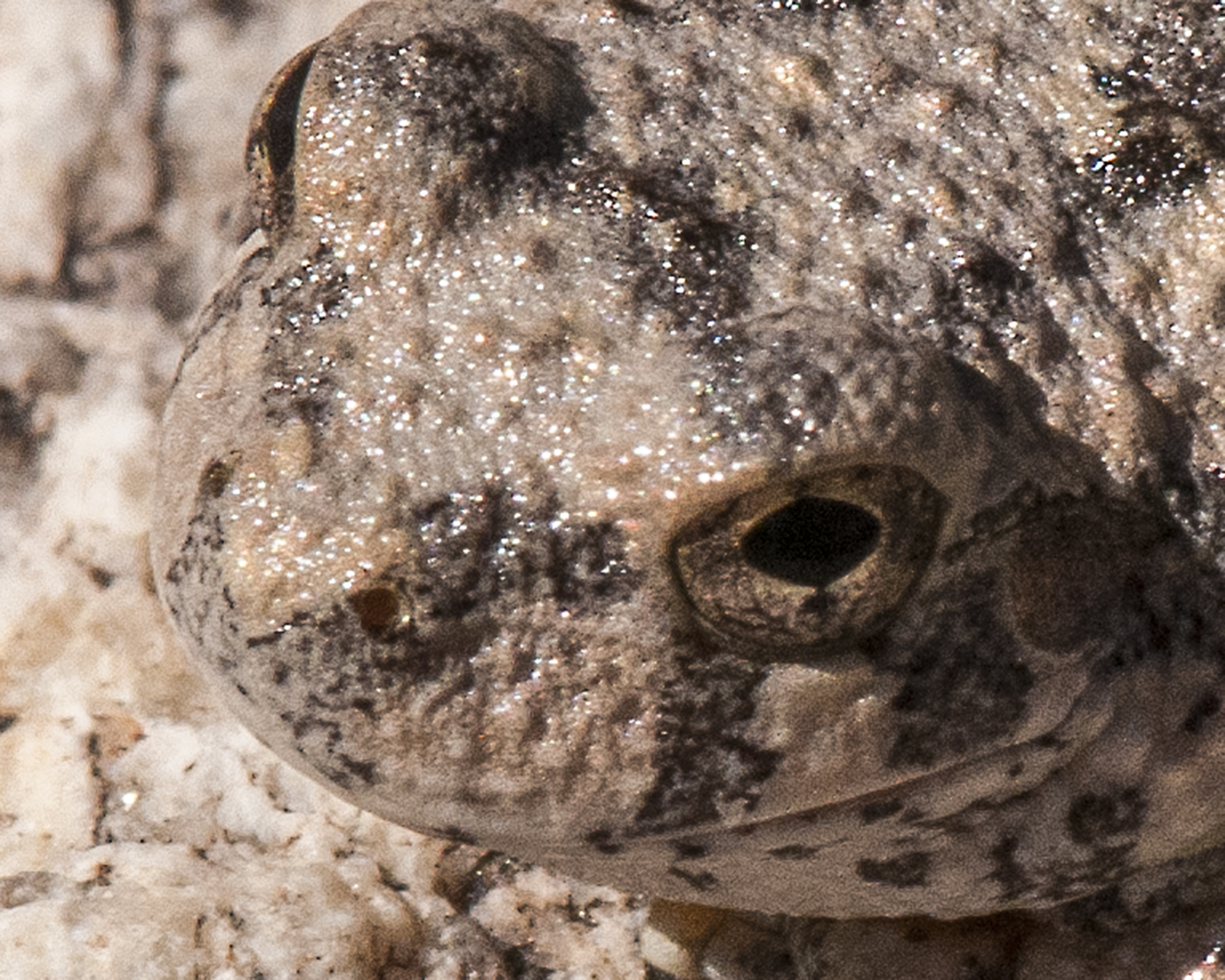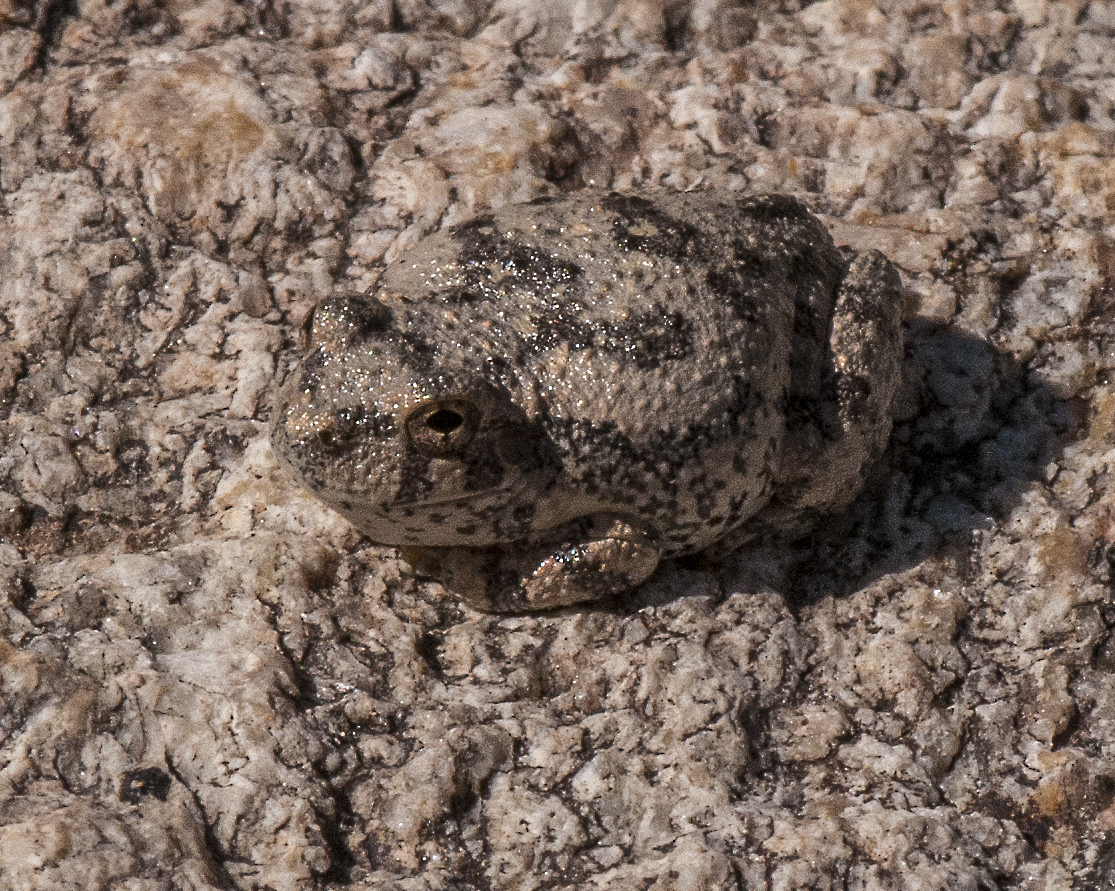Most hylids show adaptations suitable for an arboreal lifestyle, including forward-facing eyes providing binocular vision, and adhesive pads on the fingers and toes. In the nonarboreal species, these features may be greatly reduced, or absent. The Cyclorana species are burrowing frogs that spend much of their lives underground. Hylids mostly feed on insects and other invertebrates, but some larger species can feed on small vertebrates. Hylids lay their eggs in a range of different locations, depending on species. Many use ponds, or puddles that collect in the holes of their trees, while others use bromeliads or other water-holding plants. Other species lay their eggs on the leaves of vegetation hanging over water, allowing the tadpoles to drop into the pond when they hatch.
Canyon tree frogs grow to 5.0–5.5 cm (2.0–2.2 in) in length, and are typically brown, grey-brown, or grey-green in color, often with darker-colored blotching. They can vary considerably, but usually match the soil or rock coloration of their native habitats to serve as camouflage. Those from limestone habitats are lighter colored, and those from regions composed mostly of granite can even be pink in coloration. Most have bright yellow in their groin regions, and faded banding on their legs.
Canyon tree frogs are mostly nocturnal and carnivorous. They are typically found in semiarid, rocky habitats near a permanent water source. Breeding occurs during the spring rains, and large, floating egg masses of 100 or more eggs are laid on the water. During periods of low rainfall, the frogs will take refuge in rock crevices.
Santa Catalina Mountains.
Prison Camp
Location: Rock slab across from wall beside wash just before waterfall
10/9/17
See Wikipedia Pictures and Description




